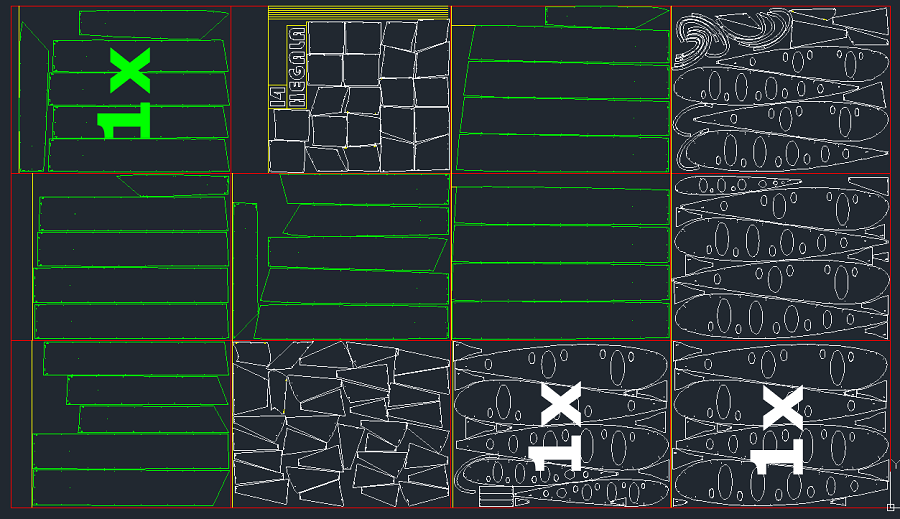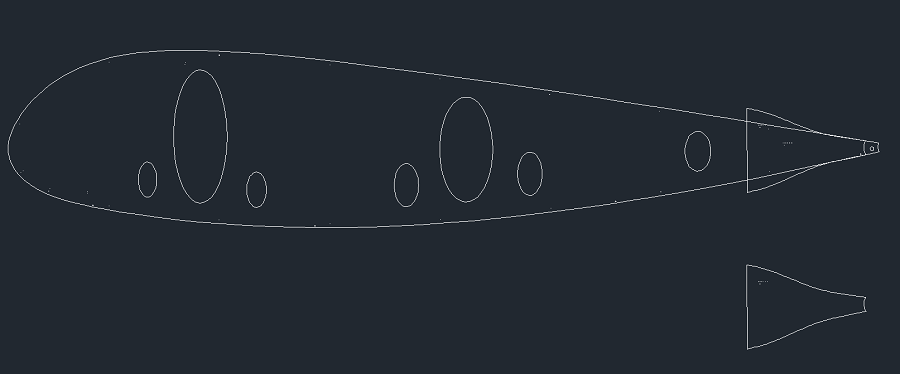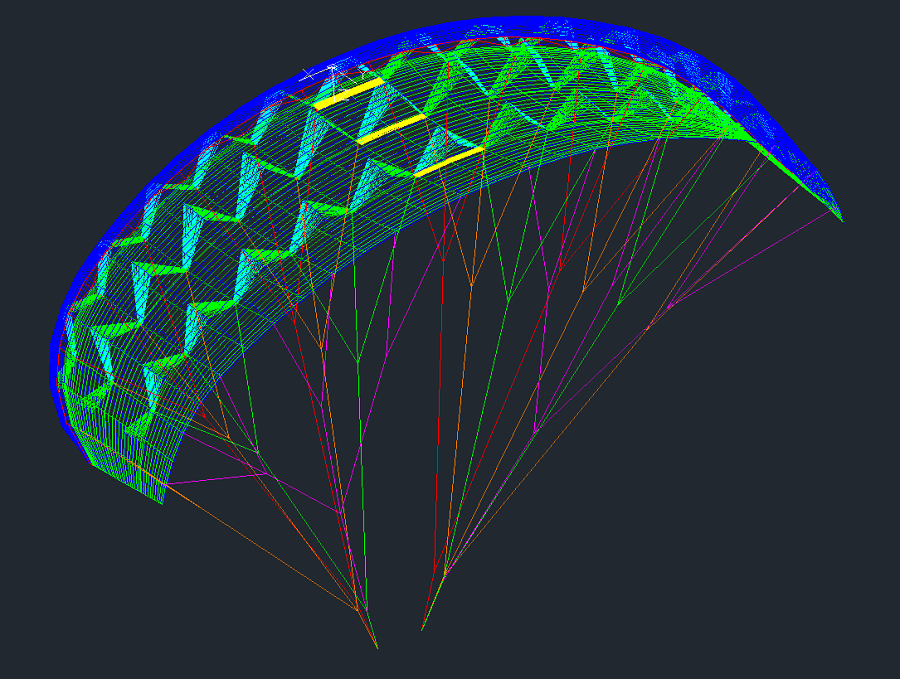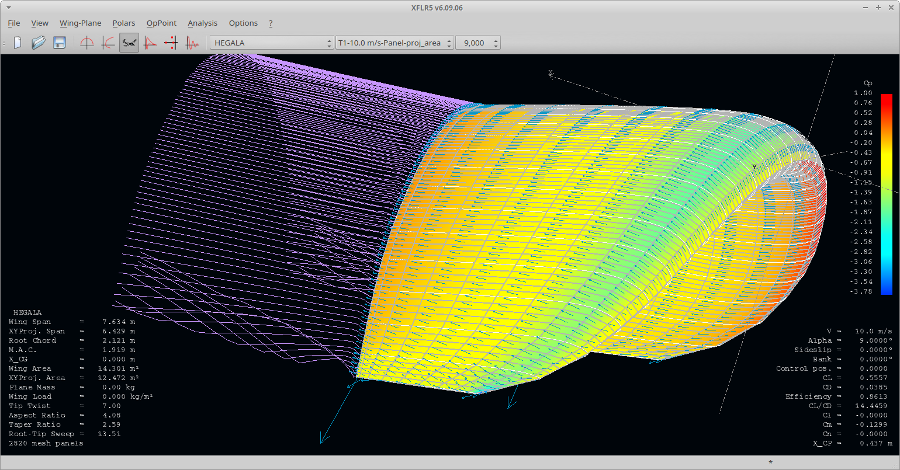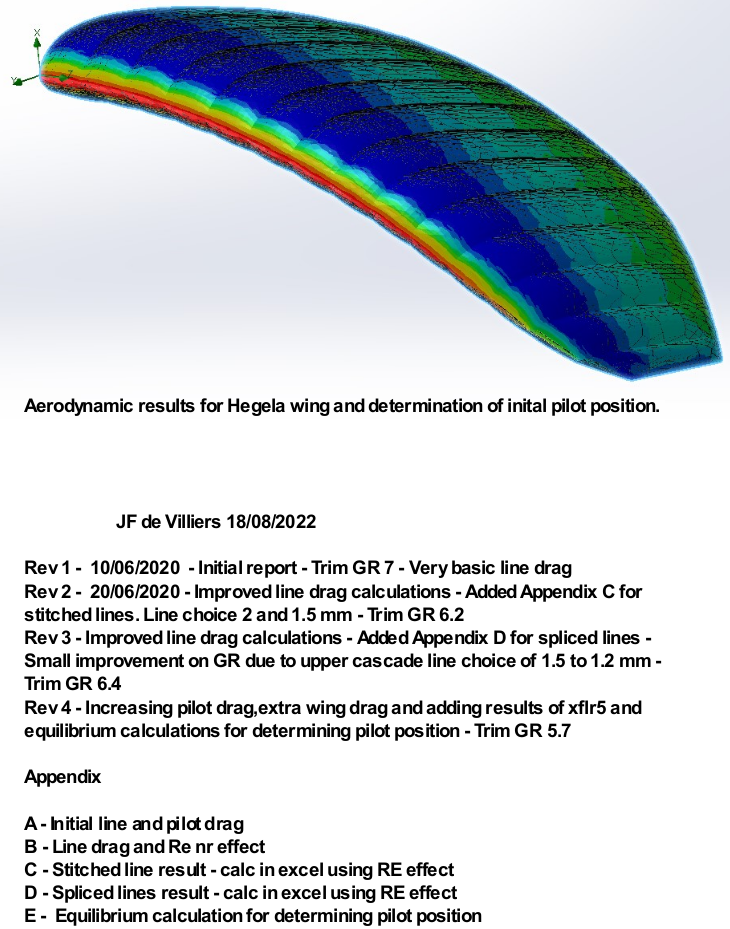By Eric Fontaine (Tarnos, France)
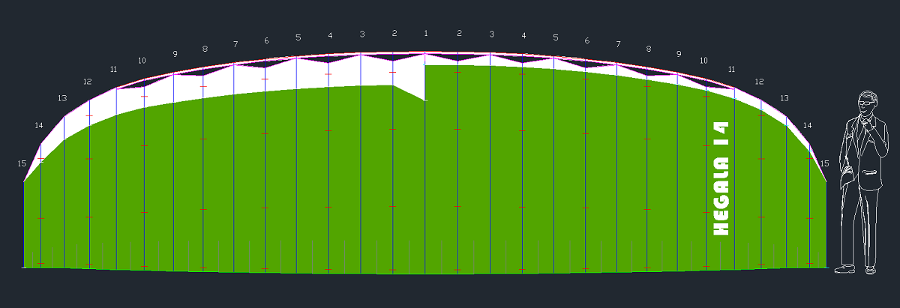 Figure 1. Hegala
14 "Wing" in Basque
1. Description
Figure 1. Hegala
14 "Wing" in Basque
1. Description
DIY friends, here is an evolution of the 2016 GNUA13, it was time to design a
new mini soaring wing for strong winds…
I present to you: HEGALA 14 “Hegala = Wing” in Basque
The objective of this wing is soaring on the dunes of my region:
Atlantic coast of France.
The few innovations compared to the GNUA13, after the validation of
certain construction techniques on various prototypes: kites and
single-skin paragliders are:
- The
sail now has 3 more cells, its surface is 14.30m².
- The general shape is slightly modified, the trailing edge is almost
straight.
- The profile is modified, the upper surface is getting closer to a
straight line shape which will perhaps make it possible to obtain a
more or less self-stable wing, the lower surface is not modified.
- The use of risers with trim may be possible without risk of collapse,
to be tested.
- Profile with increase and optimization of the holes in relation to
the attachment points, this should make it possible to avoid
deformation of the fabric while distributing the holes in an optimal
way.
- The GNUA13 had reinforcements on the nose of the profile in mylar,
now they are Ø2mm plastic rods (tuna fishing line 😉)
- The diagonals are no longer in one piece, there is one piece per row.
Lighter structure, to be validated according to the deformations of the
extrados.
- The number of cells goes from 25 cells to 28 cells, so there will be
a slightly greater aspect ratio.
- The number of closed cells is increased in order to obtain a
harmonious shape at the wing tip.
- The two profiles at the tips have a reduction coefficient (y) of 0.85
then 0.7, on the GNUA13 all the profiles were with a coefficient (y) of
1.
- The end of the wing (feather) is not suspended: harmonious shape? We
will see this in the photos of the finished wing.
- The trailing edge will be thinner with S-shaped mini-ribs, this will
validate the DAO recovery technique for the mini-ribs (S)
- Row C is slightly set back and the brakes are fixed on the profile
just before the trailing edge.
- Small Ø8 holes are present on the trailing edge on the lower surface
to empty the sand from the dunes, this wing being designed to fly at
the beach.
- The planned initial calage setting is 36%, to be confirmed and
validated during the tests.
- The line cone is a little longer, the objective being to slightly
dampen the movements of the wing, roll and pitch.
- The brake lines are taken 1 cell out of 2 in order to reduce the
tedious splicing work...
- The lines will be in Liros DC120 and DC200 and the risers in dyneema
Ø4mm
- The cutting of the panels will be done by laser: by laser diode (not
CO2) with a suction table for fabric, for the GNUA13 the fabric was
directly inserted into the plan plotter...
- The plan of the wing will be freely accessible.
2. Technical data:
Cells = 28
Surface = 14.30 m2
Span = 7.63 m
Aspect ratio = 4.07
Projected surface = 12.46 m2
Projected span = 6.41 m
Projected AR = 3.30
Aplanissement = .13
Airfoil Hegala profil.txt
Airfoil Hegala wintip profilt.txt
Three liner concept (A,B,C)
Lines = A-2-6, B-3-8, C-2-6
Brakes 1-3-7
Longueur total
de lignes = 132.27 m



